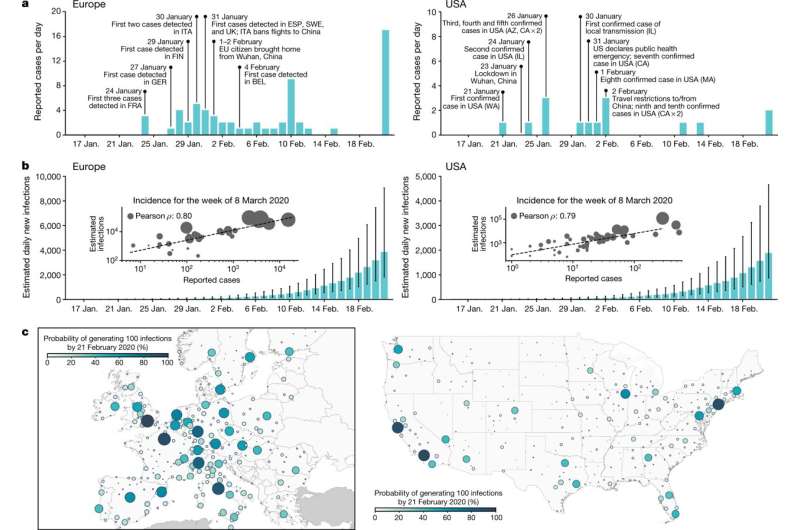
Local COVID-19 transmission was underway in California, New York, Florida and Texas well before the first reported U.S. case in Washington state on Jan. 20, 2020, according to a new study published in Nature, which indicates the virus spread much earlier and faster in the United States and Europe than previously thought.
The authors, an international team of infectious disease transmission experts, including Ira Longini, Ph.D., a biostatistics professor at the University of Florida College of Public Health and Health Professions and College of Medicine, conclude that the narrowness of the initial COVID-19 testing criteria, along with limited surveillance and testing availability, allowed the virus to circulate undetected for weeks. Community transmission was likely in several areas in Europe and the U.S. by December 2019 and January 2020, they write, and by early March, only 1 to 3 in 100 infections were detected by surveillance systems.
Reconstructing the early unnoticed spread of COVID-19 isn’t just an interesting academic exercise, Longini said, it offers important insights to help countries prepare for future outbreaks of COVID-19 variants, such as omicron, or emerging infectious disease threats.
“Our model makes it possible to quickly project the size and path of an emerging epidemic much sooner than one would think,” said Longini, a member of UF’s Emerging Pathogens Institute. “With that information, you can implement epidemiologic interventions, such as surveillance and containment, in order to mitigate transmission on a local scale.”
The team used a statistical model known as the Global Epidemic and Mobility project, or GLEAM, to track the first wave of COVID-19 in the U.S. and Europe. GLEAM separates the world into 3,200 subpopulations centered around transportation hubs in 200 cities to model possible epidemic scenarios, and is calibrated to real-world data on factors such as airline and ground transportation traffic flows, population demographics, disease dynamics, behaviors and the timing of interventions, including lockdowns.
The scientists used GLEAM early in the pandemic to analyze the spread of COVID-19 in China and concluded that travel restrictions from Wuhan may have only delayed the spread of the virus to mainland China by a few days. Findings from the new study reinforce the limits of travel restrictions in stopping the spread of infectious disease.
“Travel bans don’t work; they’re always too late,” Longini said. “By the time a country implements a ban the disease is already spreading in that country. This is probably currently true for the COVID-19 omicron variant of concern, which is being found in many locations outside of Southern Africa.”
What does work early in an outbreak, Longini said, is good surveillance and rapidly putting containment measures in place. In the case of COVID-19, for example, the illness has some distinct features, such as loss of taste and smell, and data monitoring on reported symptoms could have helped public health officials pinpoint areas of local transmission. Next, the use of polymerase chain reaction, or PCR, tests as soon as they are available, along with non-pharmaceutical interventions, such as mask-wearing, physical distancing, potential lockdowns and isolating cases and quarantining close contacts, can dramatically decrease transmission.
Source: Read Full Article





